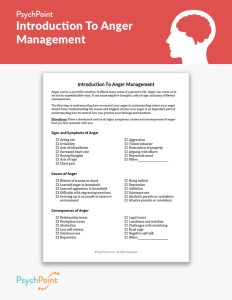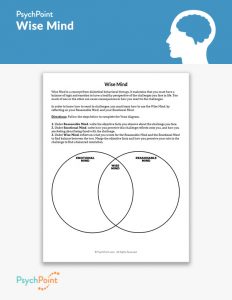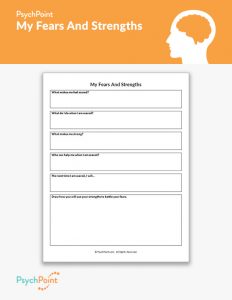Cognitive Distortions: Mind Reading Worksheet
Worksheet updated on January 3rd, 2021

Cognitive distortions are a major source of mental and emotional strain on a person's day-to-day life. Everyone struggles with cognitive distortions sometimes. They are natural patterns that our brain develops to understand how the world affects us. The challenge with cognitive distortions is they warp the way we see the world and how it relates to ourselves. Knowing how to recognize and challenge your own cognitive distortions is an important part of learning how to cope with stress.
A cognitive distortion that tends to affect how a person relates to others is called mind reading. Mind reading is the pattern of assuming you know what another person is thinking about you. When we mind read, we make assumptions about others' impressions of us that are based on our own insecurities.
Mind reading can have a significant impact on a person's quality of life. It affects the way we relate to others and the way we see ourselves. Mind reading negatively affects self-esteem, and prevents a person from seeing a situation from a clear and realistic perspective. Because of this, it is important to understand what the pattern of mind reading is and how it affects you.
About This Worksheet
This is the Cognitive Distortions: Mind Reading worksheet. This worksheet reflects on what mind reading is and how it affects a person. It provides a brief explanation of the meaning of mind reading, along with an example of how mind reading can affect a person's thoughts, feelings and behavior.
This is a great worksheet to use in conjunction with cognitive behavioral therapy (CBT). It is helpful for adolescents and adults who are struggling with self-esteem and relationship issues. It is also helpful for people who may be suffering from anxiety depression or a personality disorder.
Instructions
Before completing this worksheet, explain the concept of mind reading and how it can be affecting your client. Ensure that the client understands the importance of challenging cognitive distortions like mind reading, to help them have a healthier perspective.
Review the introduction and example provided on the worksheet with the client. When the client expresses an understanding for the concept, instruct your client to complete the reflection questions. When the client is finished, review and reflect on the results together. Provide a copy of the worksheet to the client as reference.







